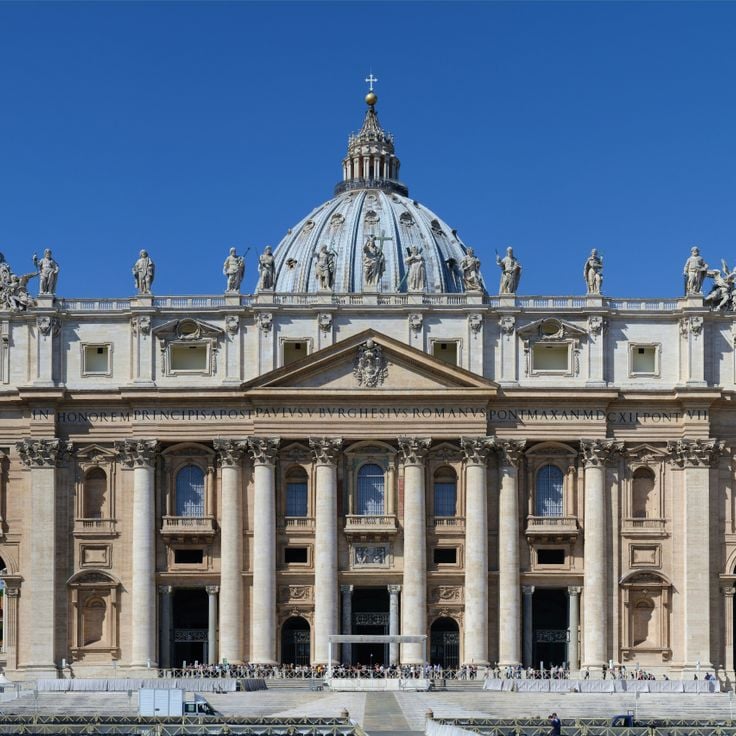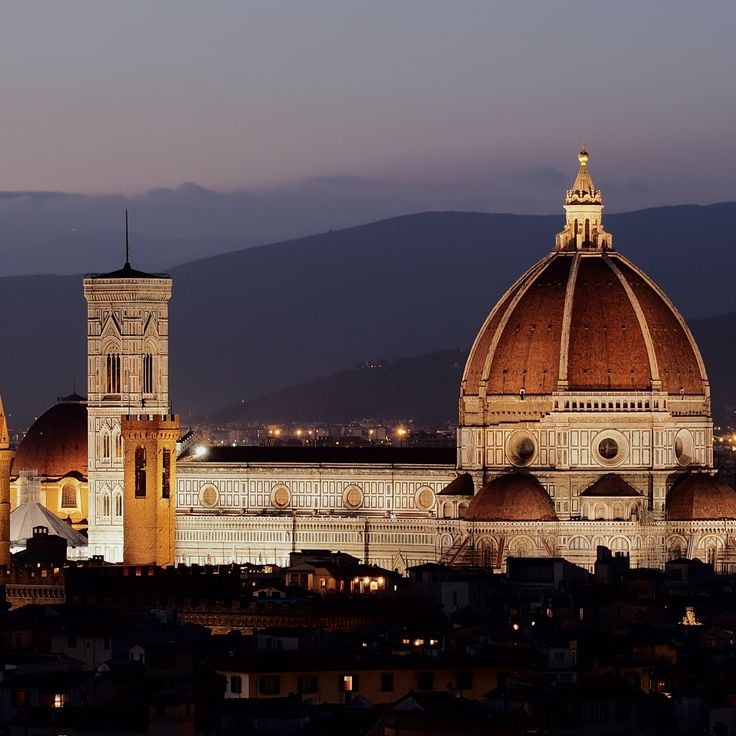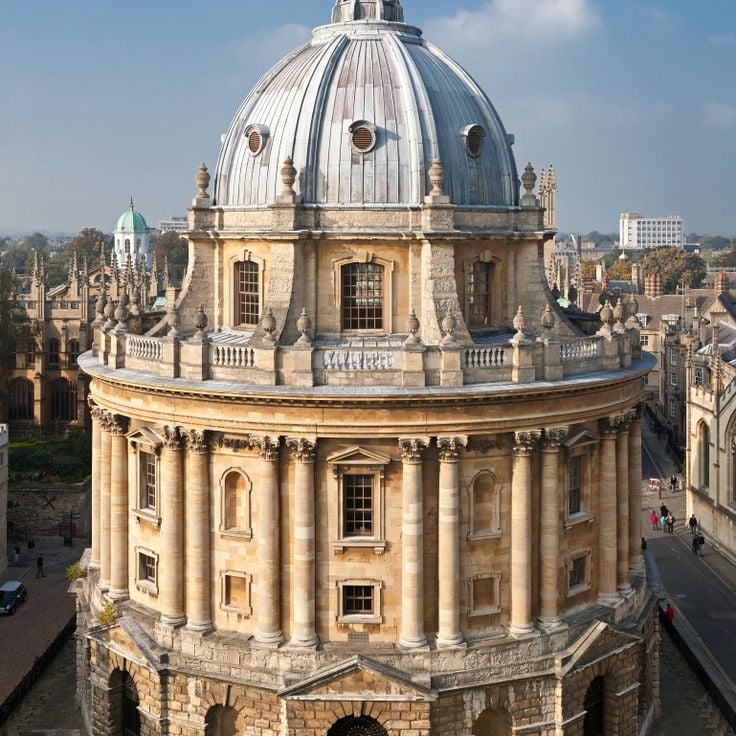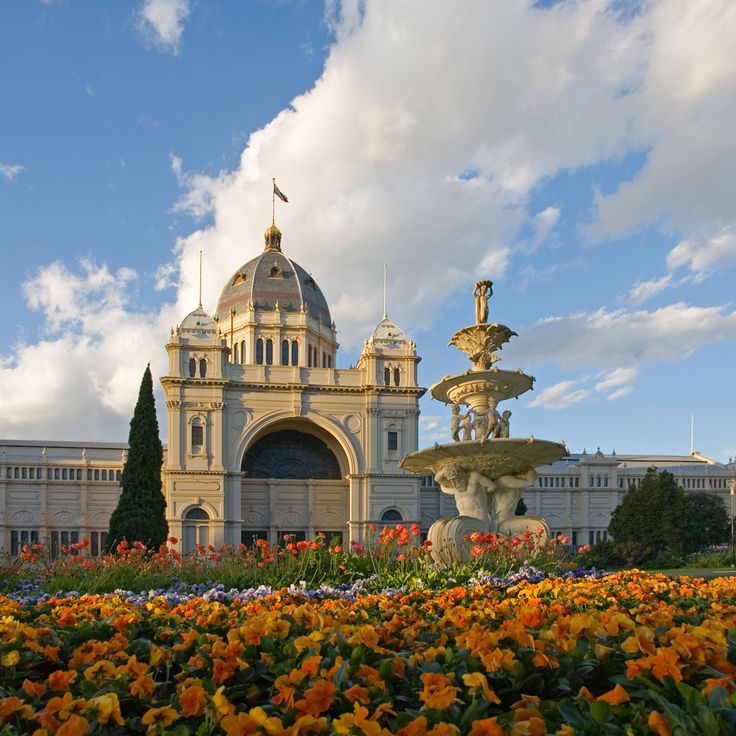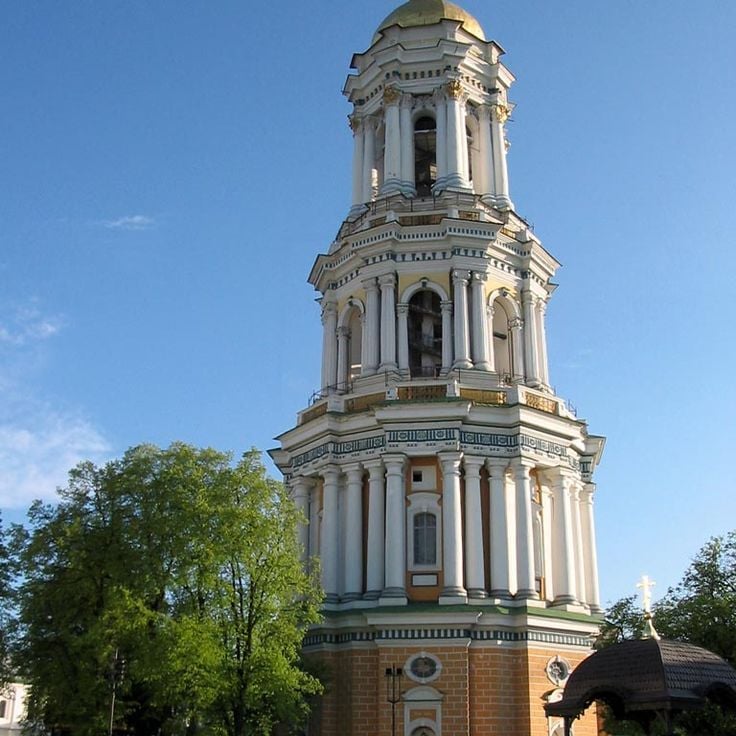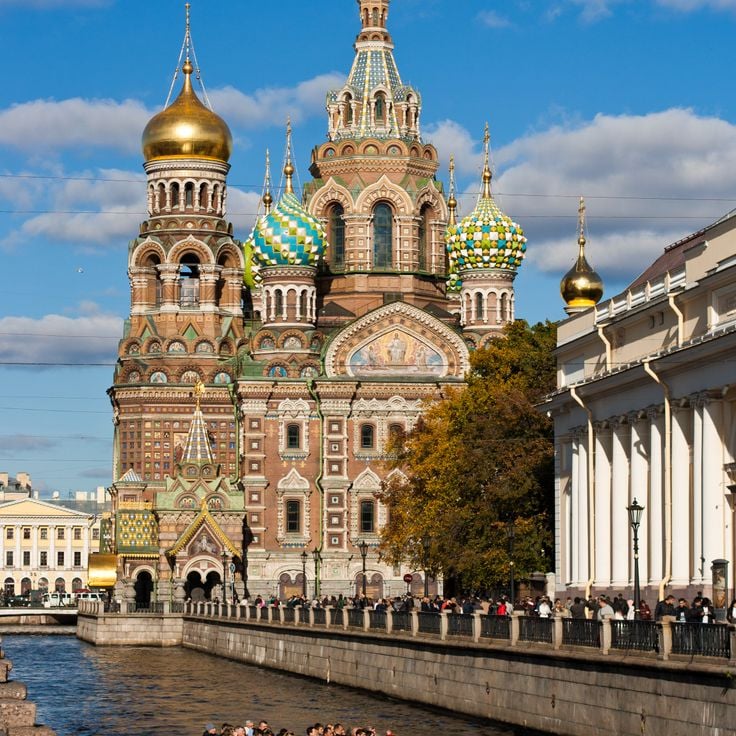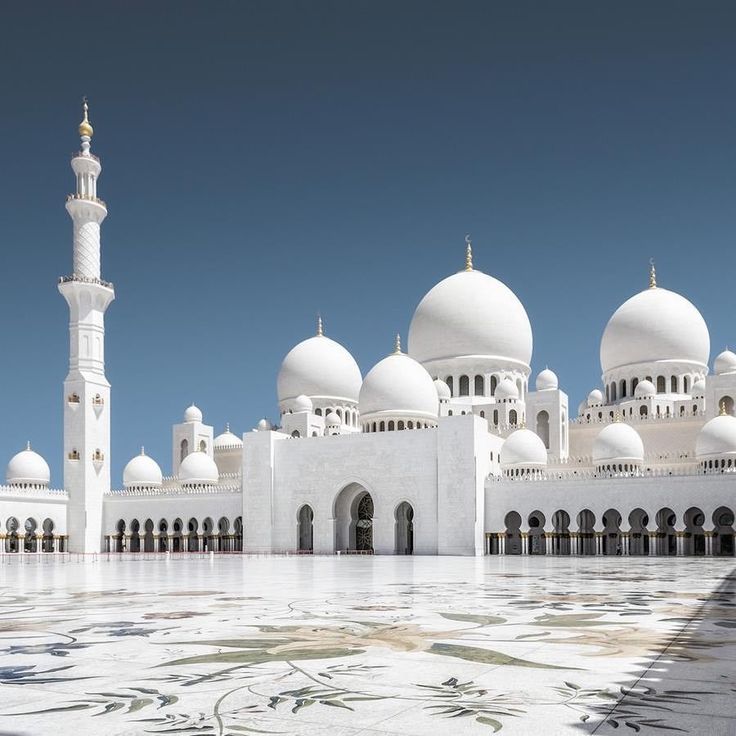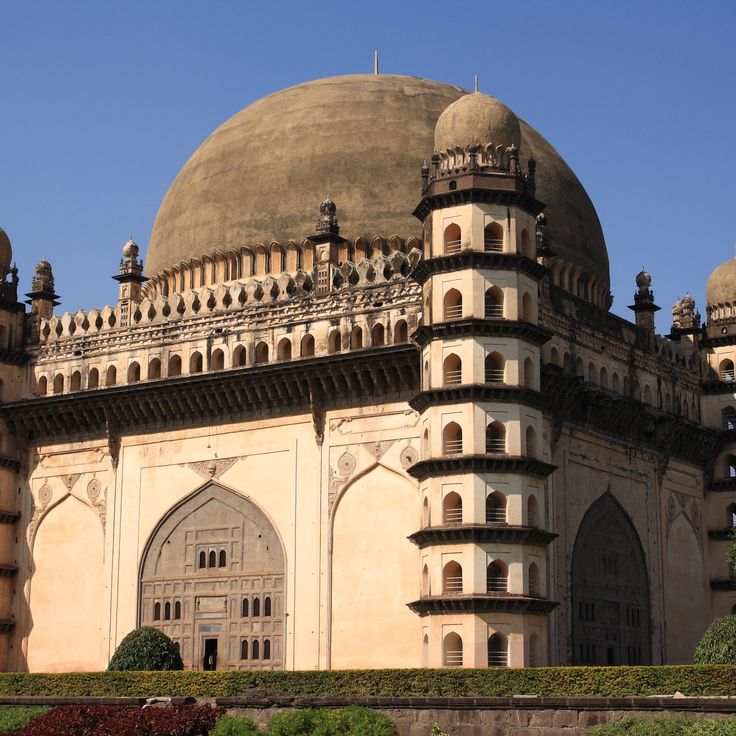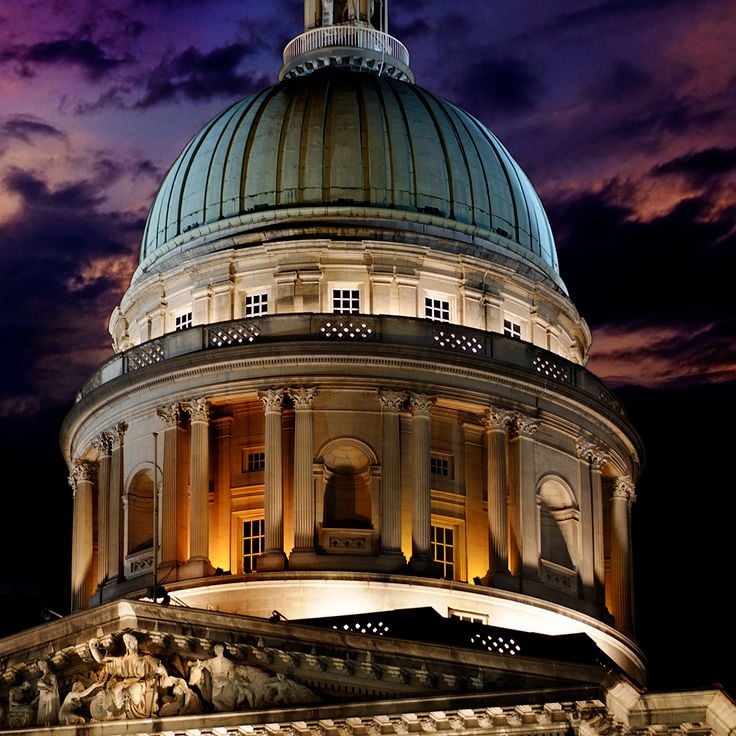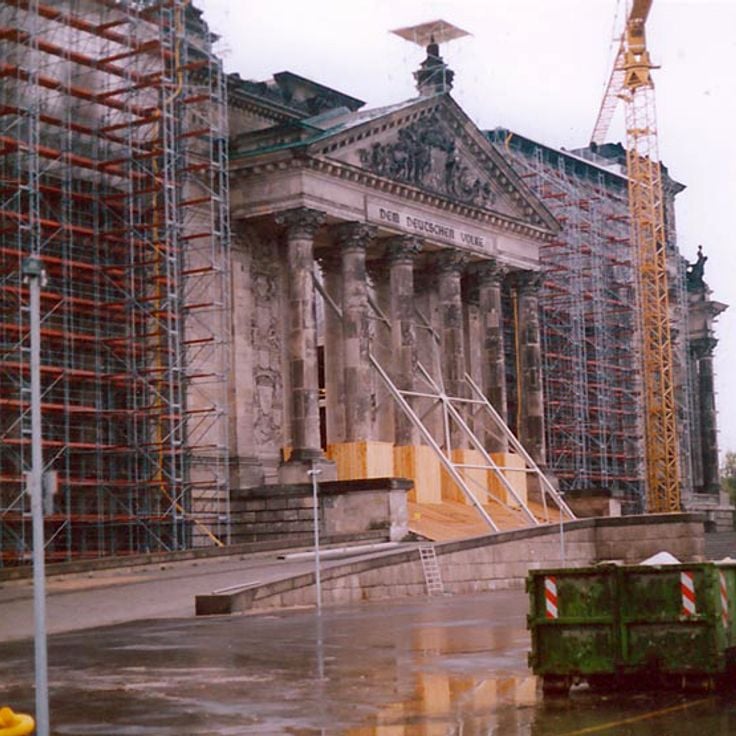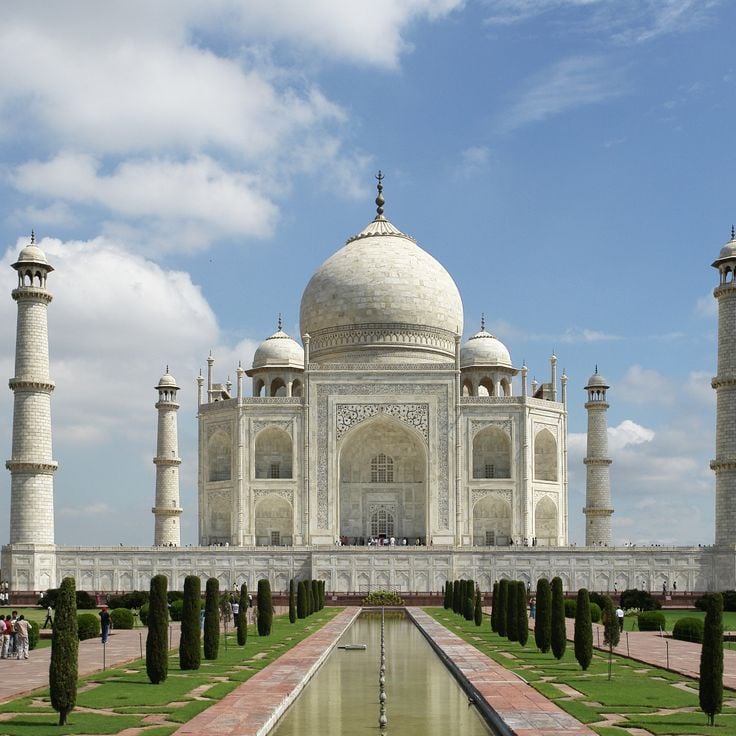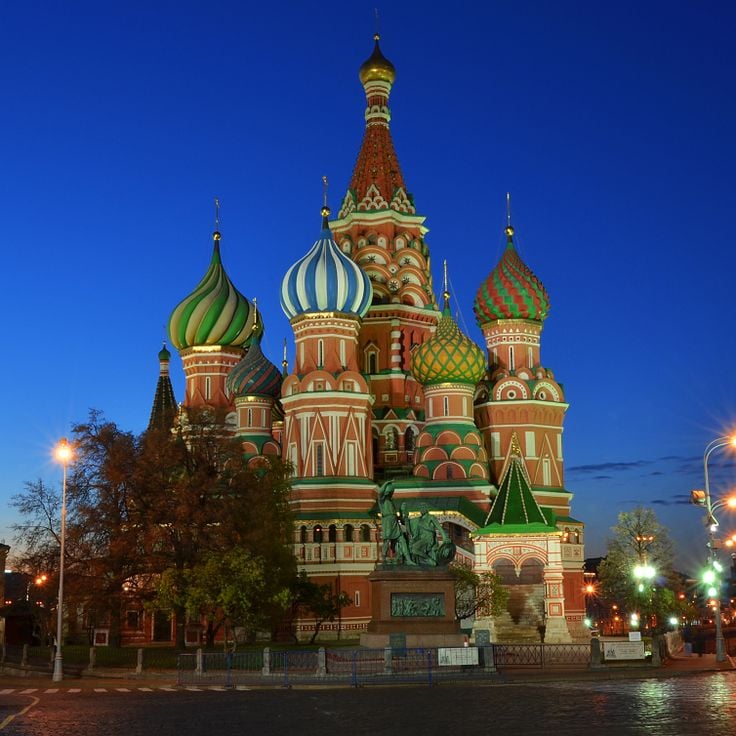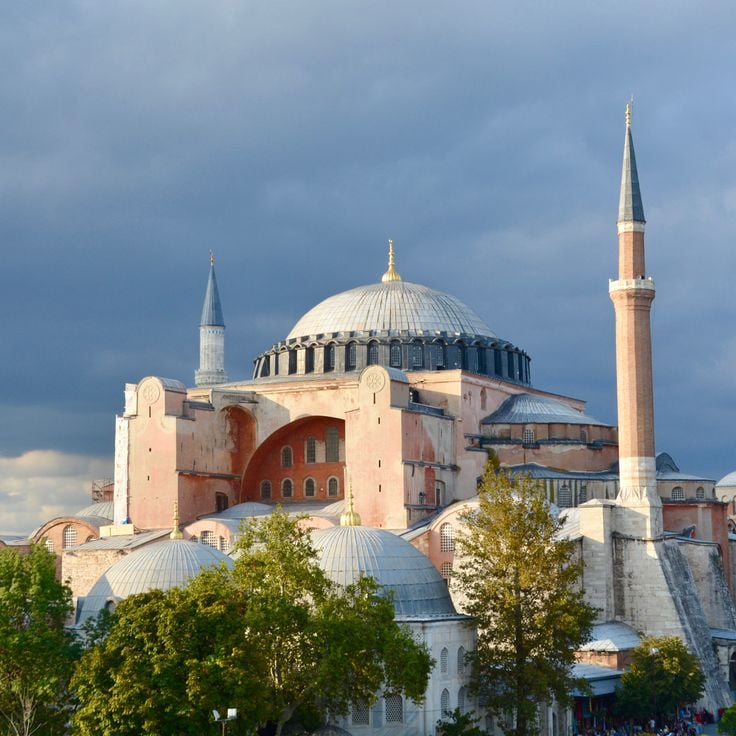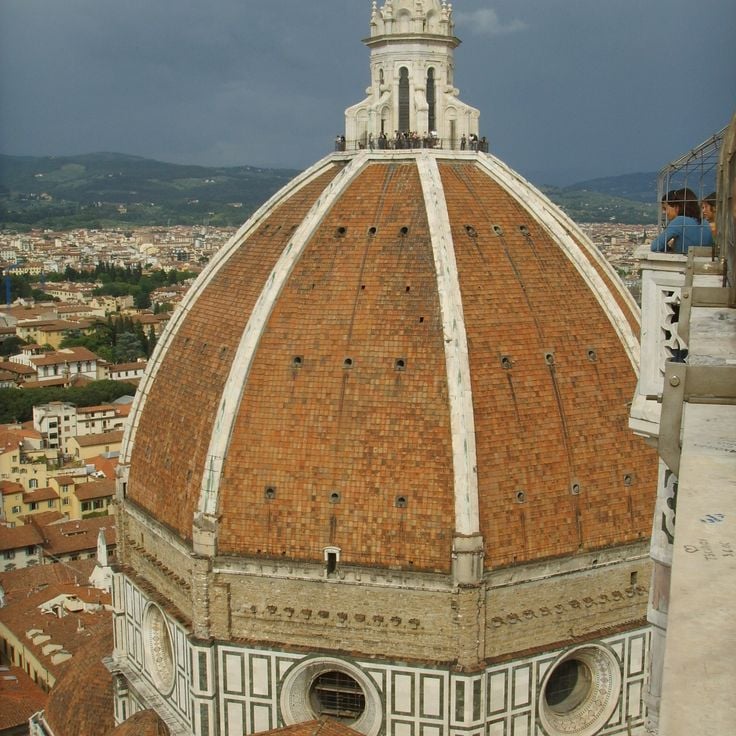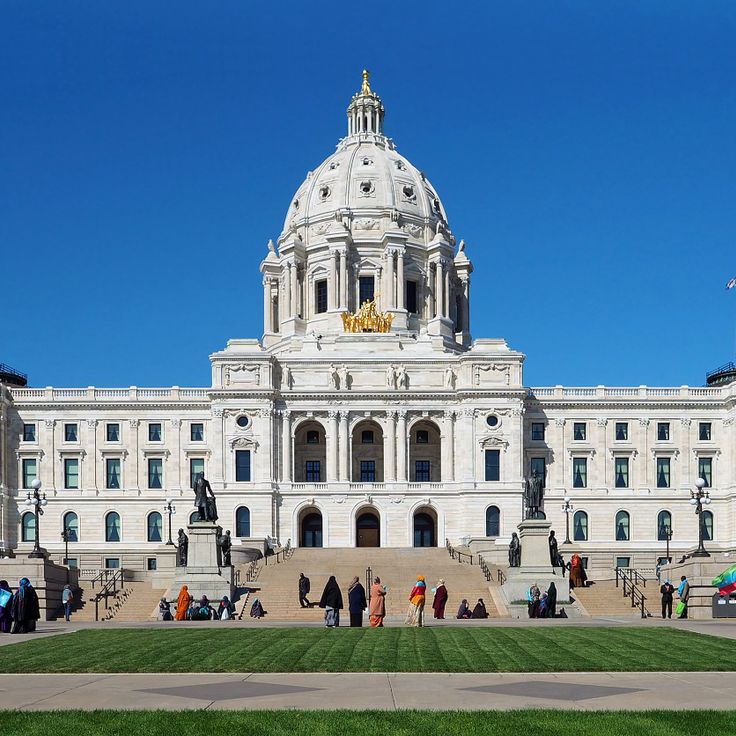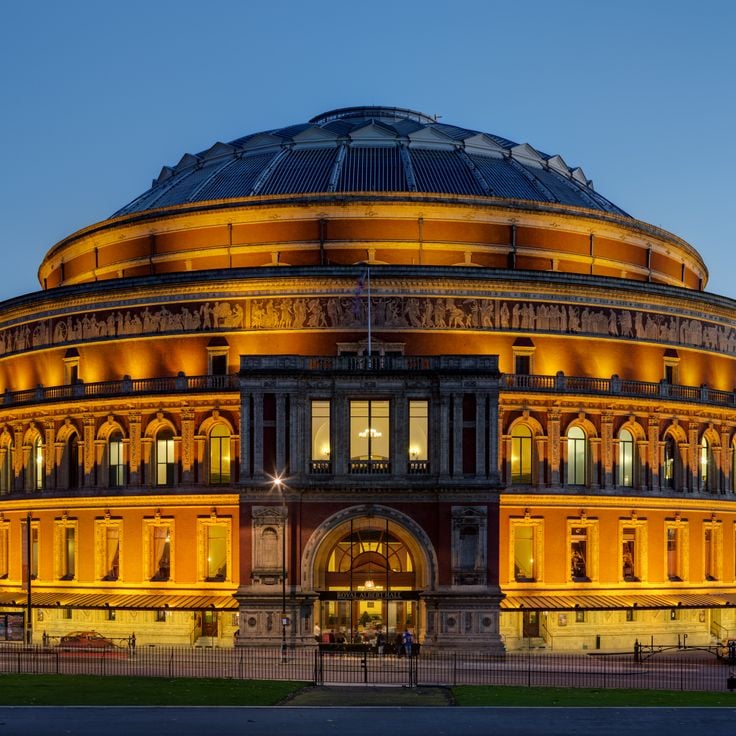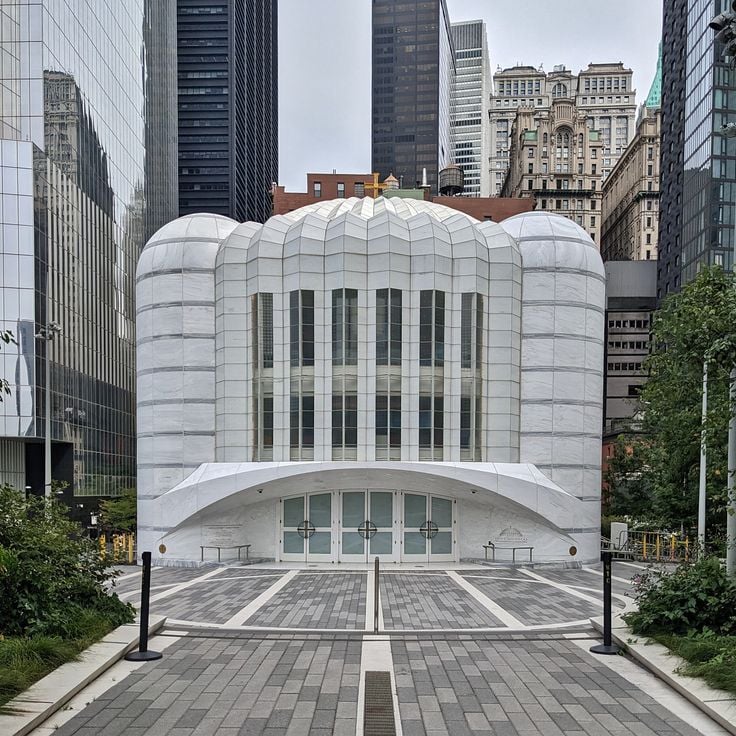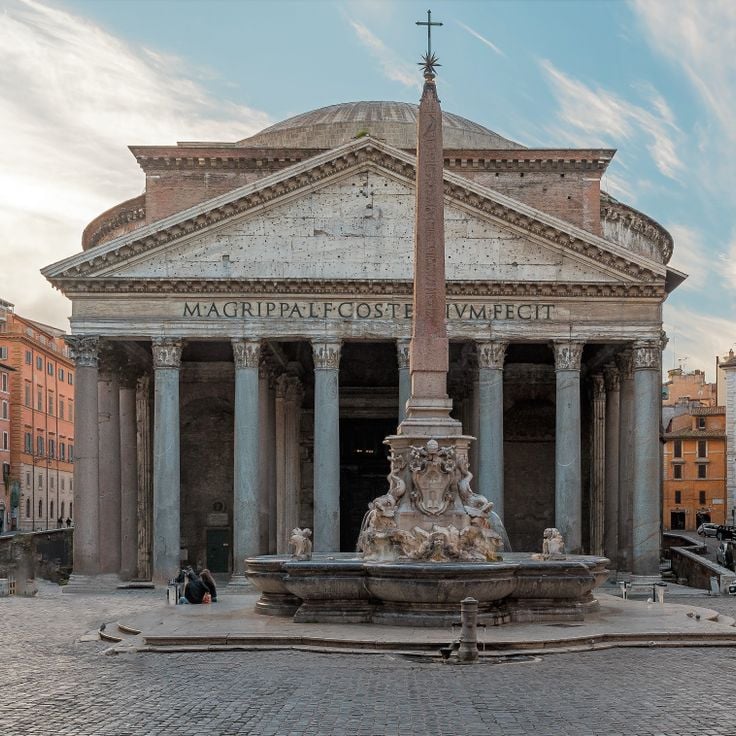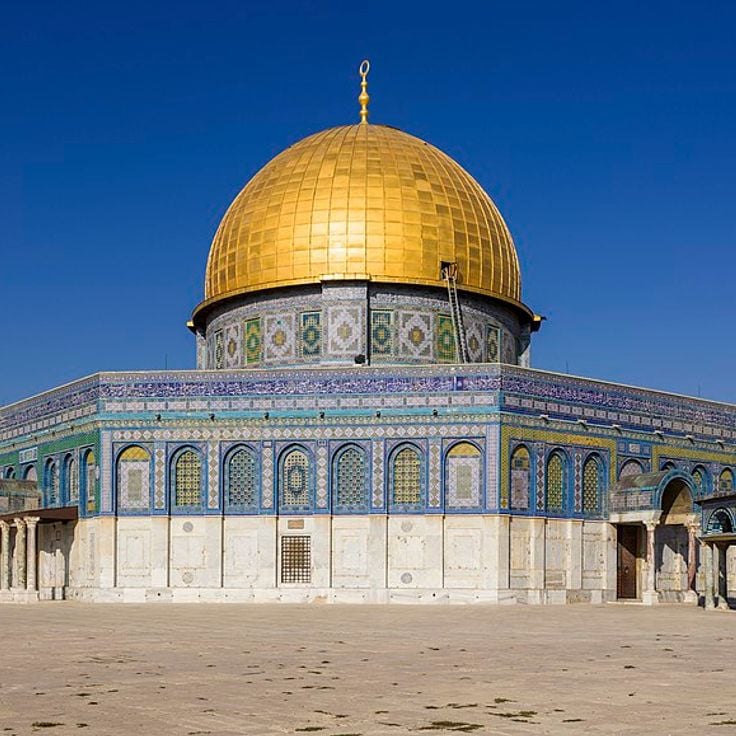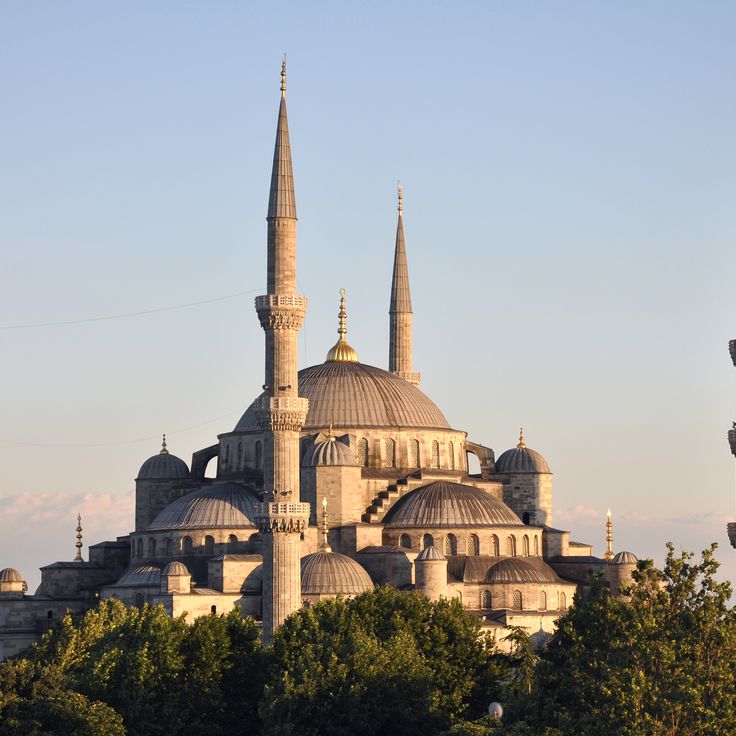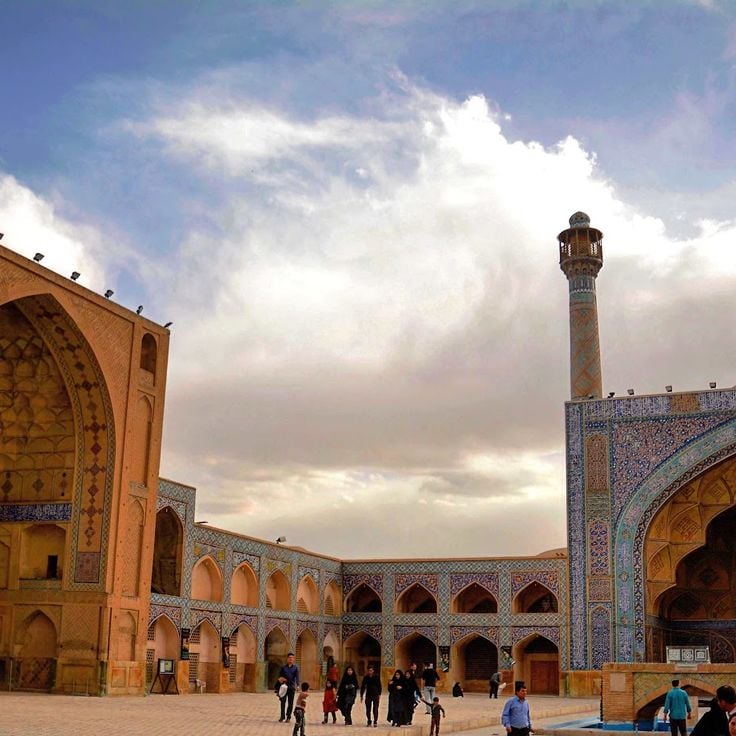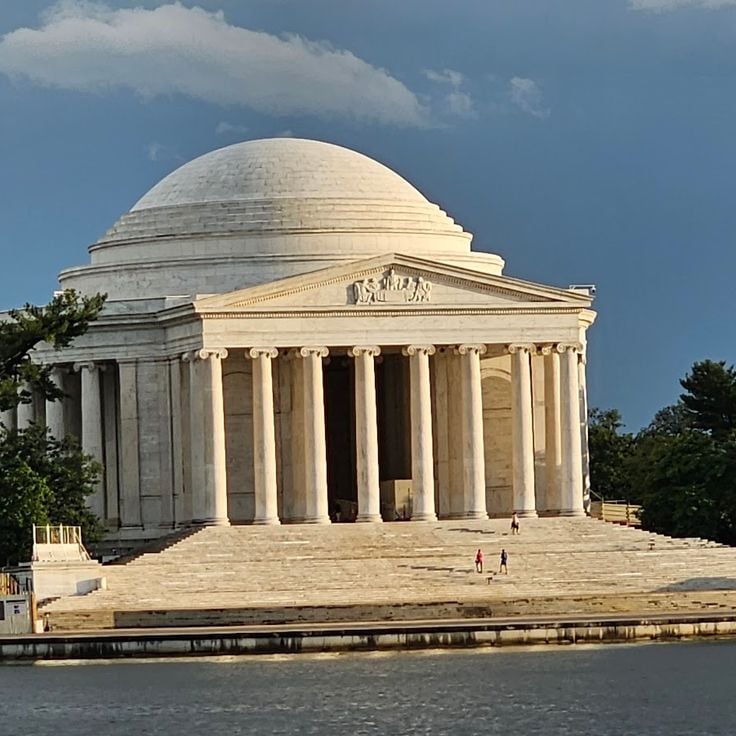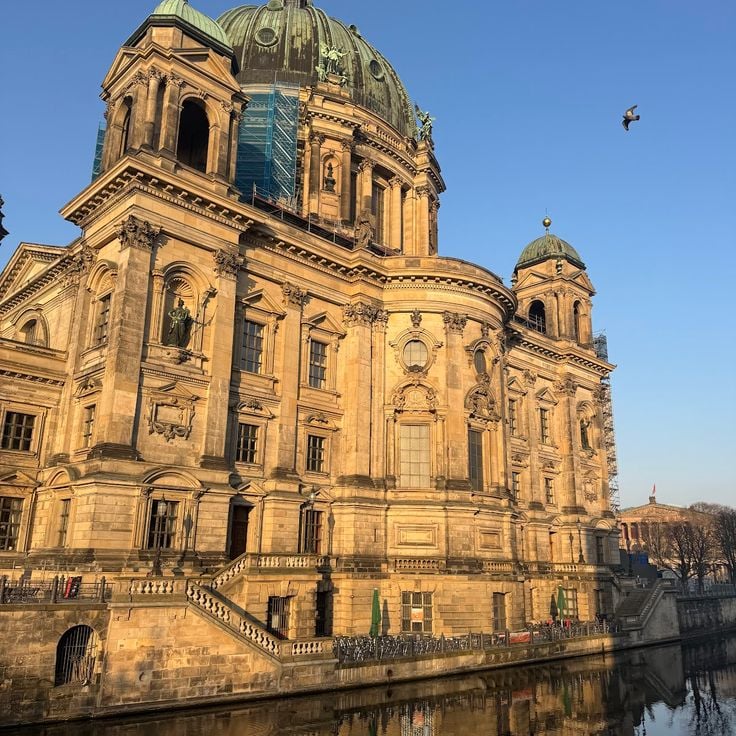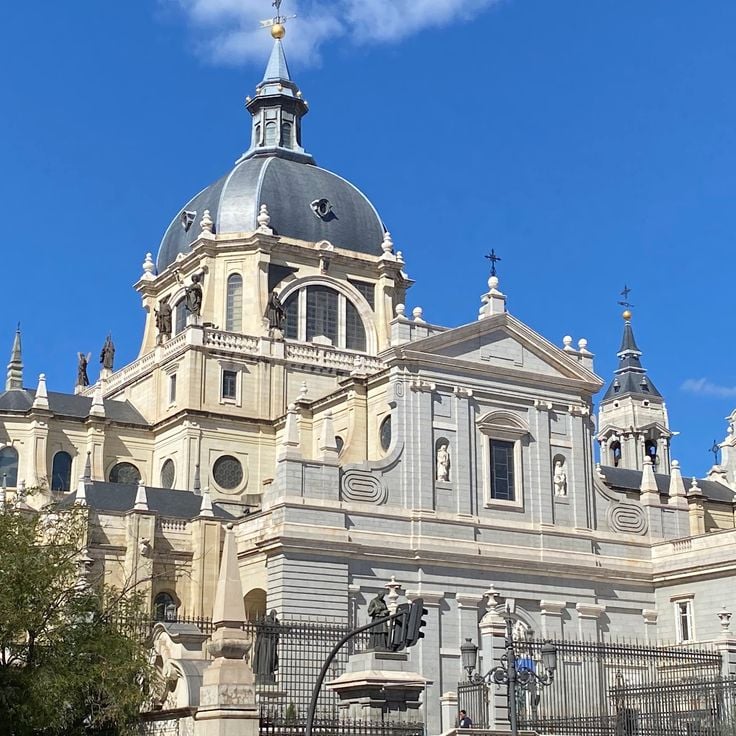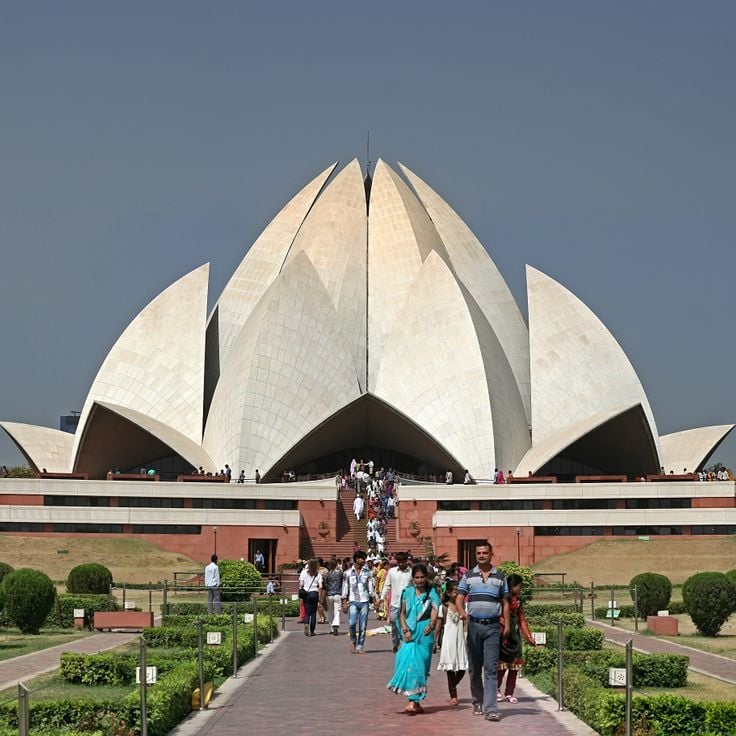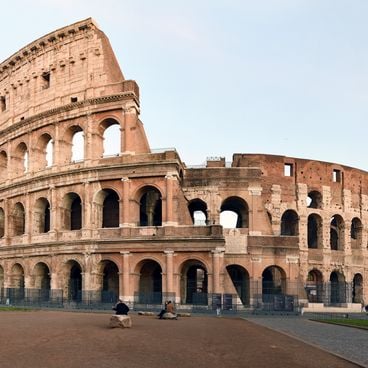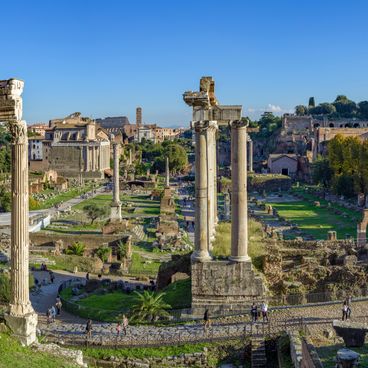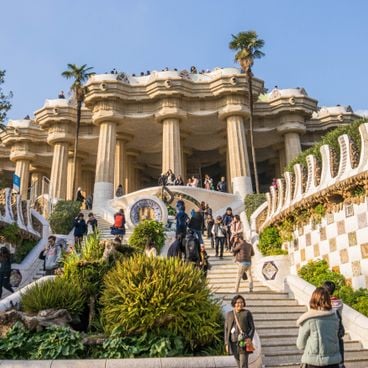This collection brings together notable domes and cupolas from all continents, signs of diverse architectural traditions extending from the Vatican to Australia, Russia to the United Arab Emirates. From the famous dome of St. Peter's Basilica in Rome to the colorful domes of the Church of the Savior on Spilled Blood in Saint Petersburg, the Renaissance dome of Florence Cathedral, to the cast-iron dome of the US Capitol in Washington, each structure tells a particular story and reflects the ambitions of its era. These buildings span several centuries of architectural innovation and serve various functions: religious structures like the Sheikh Zayed Grand Mosque or the Basilica of Our Lady of Peace in Côte d'Ivoire, civil buildings such as Oxford's Radcliffe Camera or the Australian Exhibition Palace, and even thermal spas like Budapest’s Széchenyi Baths. Each dome illustrates construction techniques and aesthetic decisions specific to its culture, offering insight into skills that enabled the creation of these monumental coverings.
Saint Peter's Basilica rises above the tomb of the Apostle Peter and forms the center of Catholic Christianity. The present building, constructed during the 16th and 17th centuries, was designed by several leading architects of the Renaissance and Baroque periods, including Donato Bramante, Michelangelo, and Carlo Maderna. The dome, which Michelangelo designed and which was completed after his death, reaches an interior height of 390 feet (119 meters) and a diameter of 138 feet (42 meters). The facade extends 377 feet (115 meters) in width, while the interior measures 610 feet (186 meters) in length. The structure combines architectural elements from different stylistic periods and houses significant works of art, including Michelangelo's Pietà and Bernini's baldachin over the papal altar.
The Cathedral of Florence, also known as Santa Maria del Fiore, rises in the historic center of the city and embodies the architectural ambition of the Renaissance. The dome, constructed by Filippo Brunelleschi between 1420 and 1436 with its characteristic terracotta-toned brick covering, represents a major breakthrough in construction engineering and reaches a height of 375 feet (114 meters) above ground level. This double-shell structure without central supporting pillars demonstrates the technical skill of fifteenth-century Florentine builders and marked a turning point in the history of architecture.
The United States Capitol has served as the seat of the American Congress since 1800 and forms the architectural center of the capital. The cast iron dome, constructed between 1855 and 1866 according to plans by Thomas U. Walter, reaches a height of 289 feet (88 meters) and rests on a circular colonnade of 36 columns. The white dome, featuring cast iron ribs on the exterior, is crowned by the 19.5-foot (6-meter) bronze Statue of Freedom. Inside, a fresco by Constantino Brumidi decorates the rotunda beneath the dome, where important state ceremonies take place.
The Radcliffe Camera is one of the earliest examples of a circular library building in Britain and features a distinctive dome in the Palladian style. Completed in 1749, the building was named after physician John Radcliffe, who bequeathed the funds for its construction. Architect James Gibbs designed the structure with a circular plan and a raised dome supported by a surrounding colonnade. The library was originally conceived as a reading room for scientific works and is now part of the University of Oxford's Bodleian Library. The dome employs a double-shell construction, with an inner shell forming the ceiling of the reading room and an outer shell creating the building's prominent exterior profile.
The Royal Exhibition Building in Melbourne, one of the few remaining exhibition halls from the 19th century, demonstrates the connection between European architectural traditions and the ambitions of an emerging colony. The central dome of this building, inaugurated in 1880, combines Byzantine and Italian design elements and rises above a Renaissance-style floor plan. This structure was built for the Melbourne International Exhibition and later served as the meeting place for the first Australian Parliament in 1901. The timber dome construction and external sheet metal cladding show the practical solutions that architects in the southern hemisphere developed to create monumental coverings.
The Bell Tower of the Kyiv Pechersk Lavra connects the Orthodox building tradition of Eastern Europe with monumental religious structures worldwide in this collection of architectural domes. Constructed in the 18th century, this structure rises above the Cave Monastery and reaches a height of approximately 315 feet (96 meters). The gilded dome crowns the multi-story tower and forms a widely visible landmark of the Ukrainian capital. The Baroque architecture demonstrates the development of ecclesiastical construction in the region and stands alongside other significant religious buildings such as the Basilica of Our Lady of Peace and Saint Peter's Basilica in this collection.
This Orthodox church in Saint Petersburg features nine colorful onion domes decorated with enamel and gilding that represent traditional Russian sacred architecture from the late 19th century. Built between 1883 and 1907 on the site where Tsar Alexander II was assassinated, the structure displays a facade entirely covered with mosaics depicting biblical scenes, encompassing more than 75,000 square feet (about 7000 square meters). The onion domes exhibit various patterns and colors, with each dome individually designed to demonstrate the diversity of Russian architecture from this period.
The Sheikh Zayed Grand Mosque combines traditional Islamic architecture with modern construction techniques and ranks among the largest mosques in the world. The building features four main domes and 82 smaller domes, all clad in white marble and decorated with floral motifs. The central dome reaches a height of 279 feet (85 meters) and spans 108 feet (33 meters) in diameter. The prayer hall accommodates 7,000 worshippers, while the courtyards and exterior areas provide space for an additional 40,000 people. The mosque was constructed between 1996 and 2007 following designs by Syrian, Italian, and Emirati architects.
This basilica in the Ivorian capital was built between 1985 and 1989 following the model of St. Peter's Basilica in Rome and features one of the largest domes of all Christian churches worldwide. The dome reaches an interior height of 518 feet (158 meters) and an exterior diameter of 295 feet (90 meters), slightly exceeding the dimensions of its Roman prototype. The construction of reinforced concrete and aluminum rests on 36 columns and is crowned by a gilded lantern with a 121-foot (37-meter) cross. The Basilica of Our Lady of Peace combines classical Renaissance architecture with modern construction techniques and was designed by architect Pierre Fakhoury, who drew upon the proportions and formal language of the Roman Baroque period.
The Gol Gumbaz in Bijapur is the mausoleum of Sultan Mohammed Adil Shah, built during the seventeenth century. This structure features a central dome measuring 144 feet (44 meters) in diameter, constructed without supporting pillars and ranking among the largest freestanding domes of its era. The square building is flanked by four octagonal towers, each rising seven stories and accessible through internal spiral staircases. The whispering gallery inside allows sound waves to travel across the entire dome width. The mausoleum combines Indo-Islamic building traditions with the technical expertise of the Deccan Sultanate, documenting the architectural ambitions of this region during the seventeenth century. The complex also includes a mosque compound and represents the final major building phase of the Adil Shahi dynasty.
The National Museum of Catalan Art displays a monumental dome that embodies Spanish Renaissance architecture. This dome rises above the central portion of the building and forms the architectural centerpiece of the museum, which was originally constructed as a pavilion for the 1929 International Exposition. The structure combines classical proportions with formal elements of the Renaissance and demonstrates the technical capabilities of early 20th-century Spanish construction.
This building in Corinthian style houses Singapore's highest judicial authority under its central dome. The architecture combines classical European elements with the modern function of a judicial building in Southeast Asia. The dome structure forms the architectural center of the building and symbolizes the authority of the city-state's supreme judicial institution.
This historic government building in Berlin was constructed in the late 19th century and underwent extensive redesign following German reunification. The Reichstag building houses the German Bundestag and features a modern glass dome that provides visitors with access via a spiral ramp to an observation platform offering views of the surrounding capital. The transparent dome symbolizes democratic openness and connects historic architecture with contemporary design. The building stands as evidence of different periods in German history and demonstrates how restoration and redesign can adapt a monument for parliamentary purposes.
This mausoleum of ivory white marble was built in the 17th century as a tomb for the wife of Mughal Emperor Shah Jahan. The central dome rises approximately 240 feet (73 meters) in height and is flanked by four smaller domes and four slender minarets. The Taj Mahal combines Persian, Turkish, and Indian architectural elements, displaying symmetrical garden layouts along with calligraphy and geometric patterns on its exterior facades. As an example of Mughal architecture, this structure demonstrates the technical capabilities and aesthetic principles of its era.
Saint Basil's Cathedral combines nine separate chapels under a common base, forming one of Russia's most distinctive religious structures. Built between 1555 and 1561 by order of Ivan the Terrible, the cathedral features nine differently designed onion domes, each crowning its own church and decorated with colorful geometric patterns. This structure on Red Square represents the Russian Orthodox architectural tradition of the 16th century and documents the technical capabilities of the era's builders in constructing multiple domes on a compact footprint.
The Hagia Sophia in Istanbul represents a major example of Byzantine architecture with its expansive central dome, one of the largest of its kind. Built in the 6th century under Emperor Justinian, the dome rests on a system of pendentives and half domes that served as a model for religious buildings for centuries. Originally designed as a church, the Hagia Sophia was later converted into a mosque and is now a museum that combines architectural traditions from different eras and cultures.
The dome of Florence Cathedral, designed by Filippo Brunelleschi, was built between 1420 and 1436 and represented a major technical achievement of the Renaissance. The double-shell construction reaches a height of 380 feet (116 meters) and spans the cathedral's octagon without central support. Brunelleschi developed new building techniques for this structure, including a herringbone brick pattern and a system of lateral reinforcement ribs. The octagonal dome forms the visible landmark of the Tuscan city and marked a turning point in European architectural history.
The Minnesota State Capitol features a marble dome that rises 223 feet (68 meters) above ground level and is crowned by a gilded quadriga sculpture. Completed in 1905, the dome was modeled after Saint Peter's Basilica in Rome and is clad in white Georgia marble. It dominates the Saint Paul skyline and serves as an architectural landmark of the city. Designed by Cass Gilbert, the building combines classical design elements with early 20th-century American government architecture.
The Hôtel des Invalides was built in the 17th century as a hospital and residence for war veterans and remains a major architectural complex in Paris. The church within the complex is topped by a gilded dome that stands as one of the defining features of the Parisian skyline. Beneath this dome lies the tomb of Napoleon Bonaparte, completed in 1861 after his remains were returned from Saint Helena. The site also houses the Army Museum, which displays an extensive collection of military history artifacts. The baroque dome was designed by Jules Hardouin-Mansart and reaches a height of 351 feet (107 meters).
The Rhode Island State House in Providence is a government building completed in the late 19th century. The structure features a dome made of white Georgia marble that ranks among the largest self-supporting marble domes in the world, measuring 82 feet (25 meters) in diameter. The building's neoclassical architecture was designed by McKim, Mead & White and demonstrates the technical capabilities in dome construction at the turn of the 20th century, while serving as the seat of government for the smallest US state.
The Royal Albert Hall is a concert hall in South Kensington, London, opened in 1871 and featuring a distinctive elliptical dome of iron and glass, later reinforced with fiberglass. The hall seats approximately 5,300 people and serves as a venue for classical music, rock, pop, and other events. Since 1941, it has hosted the annual BBC Proms festival, an eight week summer concert series. The dome structure spans about 207 feet (63 meters) and forms a distinctive element of the city's Victorian architectural heritage.
The Church of Saint Nicholas in Prague's Lesser Town displays Baroque architecture from the 18th century with a green patinated copper dome that rises above the Prague skyline. The dome rests on a high drum and forms a distinctive silhouette together with the separate bell tower. The interior contains frescoes by Johann Lucas Kracker and stucco decoration by Ignaz Franz Platzer. The church was begun by Christoph Dientzenhofer and completed by his son Kilian Ignaz.
San Francisco City Hall was completed in 1915 in the Beaux-Arts architectural style and features an imposing dome that reaches 308 feet (94 meters) in height, surpassing the dome of the United States Capitol in Washington. The building was constructed following the 1906 earthquake and serves as the administrative headquarters of the city. The dome was modeled after the dome of Les Invalides in Paris and rises above a classical columned portico. Within this collection, City Hall demonstrates the American adaptation of European dome building traditions in the early 20th century.
The Pantheon in Rome is a Roman temple from the second century, located in the Pigna district. This structure was built under Emperor Hadrian and features a freestanding dome with a diameter of 142 feet (43 meters), which brings natural light into the interior through a central oculus. The dome of the Pantheon represents a technical achievement of ancient architecture and served as a model for numerous later domed structures. The building was converted into a Christian church in the seventh century and remains one of the best preserved monuments from the Roman Empire.
The Dome of the Rock is an octagonal Muslim shrine in Jerusalem's Old City, built over a rock considered sacred in the Abrahamic religions. Constructed in the late 7th century under the Umayyad caliph Abd al-Malik, the monument features a gilded wooden dome resting on an octagonal drum. The exterior walls are adorned with marble and Ottoman tiles, while the interior displays Byzantine mosaics and Arabic inscriptions. This structure represents one of the oldest surviving Islamic buildings and demonstrates the early development of Islamic architecture, combining Byzantine, Persian, and Roman building principles. The Dome of the Rock occupies the Temple Mount and forms a defining element of Jerusalem's skyline.
This Anglican cathedral rises in the City of London as a major work by English Baroque architect Christopher Wren, who designed it following the Great Fire of 1666. The dome of St Paul's Cathedral, reaching 365 feet (111 meters) above ground, consists of three shells: an inner dome, a reinforced brick cone, and an outer lead covering on a timber frame. This innovative construction allowed for the combination of an imposing exterior form with harmonious interior proportions. Built between 1675 and 1710, the cathedral became a model for numerous domed structures throughout the English speaking world and documents the technical capabilities of early modern architecture.
The Blue Mosque in Istanbul, officially known as the Sultan Ahmed Mosque, was constructed between 1609 and 1616 under Sultan Ahmed I and stands as one of the most significant examples of Ottoman architecture. This collection presents its distinctive cascade of domes, where a central main dome measuring 77 feet (23.5 meters) in diameter is surrounded by four half domes, which are in turn flanked by smaller domes. The structure combines classical Byzantine dome construction techniques with Ottoman design elements and demonstrates the technical mastery of 17th-century architects. The dome construction rests on four massive pillars and is illuminated by over 200 stained glass windows that fill the interior with distinctive light. Together with its six minarets and blue ceramic tile decoration in the interior, this mosque demonstrates the architectural ambitions of Ottoman rule at the beginning of the 17th century.
The Great Mosque of Isfahan, also known as the Friday Mosque, is one of the most significant congregational mosques in Iran and demonstrates architectural development spanning several centuries of Islamic history. This mosque combines structural elements from different periods, from the Seljuks to the Safavids, and illustrates the continuous evolution of Persian building techniques. The four monumental iwans surround a central courtyard and demonstrate classic Persian mosque architecture with its characteristic domes and elaborate tile decorations. The complex covers an area of approximately 20,000 square meters (215,000 square feet) and represents a significant example of the integration of religious and architectural traditions. As part of this collection, the mosque represents Persian dome construction with its double-shell structures and geometric patterns typical of Iranian architecture.
The Mausoleum of the Báb rises on Mount Carmel in Haifa and serves as the holiest shrine of the Baháʼí Faith. The structure combines classical Western architectural elements with Middle Eastern design principles and is crowned by a gilded dome visible above the city and the Mediterranean Sea. The central edifice houses the remains of the Báb, the religion's founder and forerunner to Baháʼu'lláh. The terraced Persian gardens extending from the base of the mountain to the shrine form a geometric layout with fountains, pathways, and plantings. This sacred site draws pilgrims from the worldwide Baháʼí community and stands as an example of 20th-century religious architecture in dialogue between Western and Eastern building traditions.
The Jefferson Memorial stands on the shore of the Tidal Basin in West Potomac Park, Washington DC, as a national monument honoring the third President of the United States, Thomas Jefferson. This neoclassical structure, completed in 1943, features a circular colonnade of white marble crowned by a shallow dome. The architectural design draws inspiration from the Roman Pantheon and reflects Jefferson's own architectural preferences. At the center of the open rotunda stands a 19-foot (5.8-meter) bronze statue of the President, surrounded by inscriptions of his most significant writings, including excerpts from the Declaration of Independence.
The Berlin Cathedral is the principal Protestant church in Germany and stands on Museum Island in the historic heart of the capital. Built between 1894 and 1905 in the style of the Neo-Renaissance and Neo-Baroque, the cathedral features a central dome rising to 322 feet (98 meters) that shapes the urban skyline and was restored after the destruction of World War II. This domed structure combines the technical achievements of the late 19th century with the ambition of the Hohenzollern dynasty to create a representative house of worship. The Berlin Cathedral illustrates the architectural and political aspirations of the Prussian Empire and joins this collection of monumental domed structures that express religious and state authority.
The Cathedral of La Almudena in Madrid was constructed between 1883 and 1993, replacing earlier plans from the 16th century. This Catholic cathedral combines a neoclassical exterior with a neo-Gothic interior and stands adjacent to the Royal Palace. The dome rises above the crossing and serves as the architectural centerpiece of the cathedral, following traditional principles of sacred architecture in Spain. As the seat of the Archdiocese of Madrid, La Almudena represents an important religious structure in the Spanish capital.
The dome of this library represents one of the most elaborate architectural features of the main building on Capitol Hill. Constructed in the late 19th century in the Beaux-Arts style, it combines load-bearing iron structures with decorative surfaces. The vault spans the central reading room and rises to a height of approximately 160 feet (49 meters). The interior features figurative paintings and stucco ornamentation depicting the scientific and cultural heritage of various civilizations. The dome structure forms part of a building complex that serves as the world's largest library, housing over 170 million items and functioning as the research institution of the US Congress.
The Lotus Temple in New Delhi is a Bahá'í House of Worship completed in 1986. Designed by Fariborz Sahba, the structure consists of 27 white marble petals arranged in nine groups to form a lotus flower. The central prayer hall accommodates approximately 2,500 visitors and features a dome rising to 131 feet (40 meters). This domed structure is supported by a system of reinforced concrete and marble cladding that requires no internal support columns. The temple sits within gardens containing nine pools and, in accordance with Bahá'í principles, remains open to people of all faiths.
